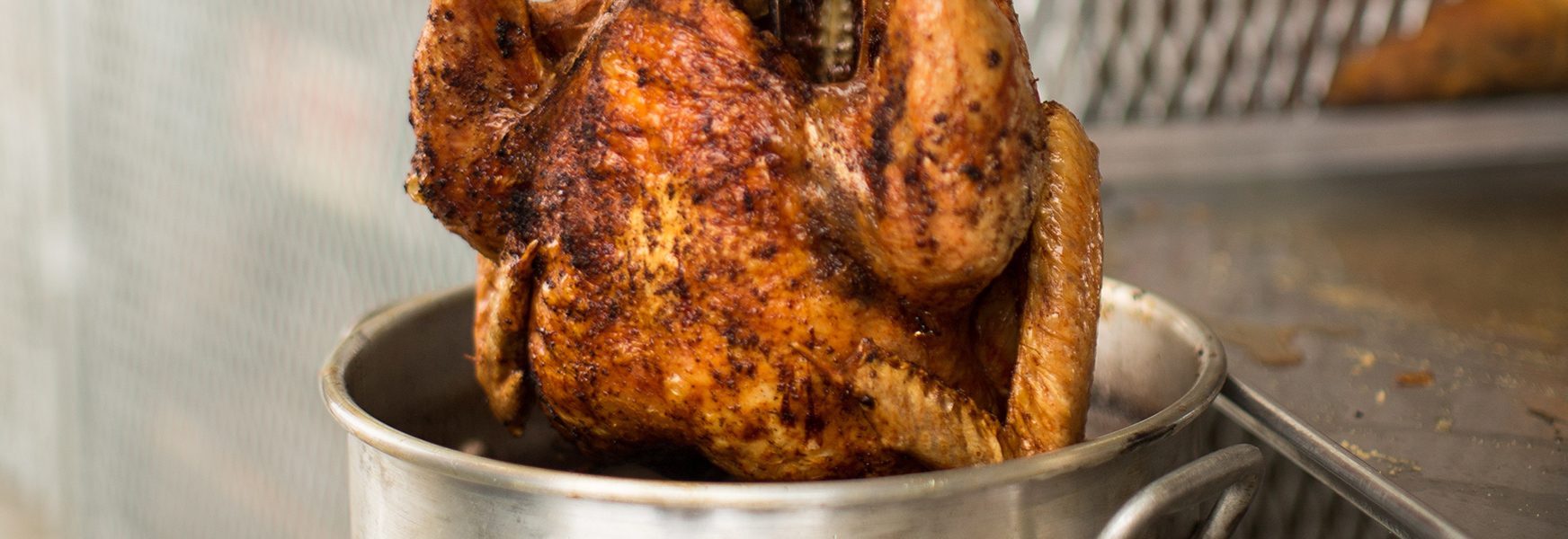What Do You Do With 260 Tons of Leftover Thanksgiving Turkey?

The answer to this title question will come a little later. For now, whether digging into leftovers or preparing a socially distant dinner for family and friends, we are bound to find creative ways to celebrate Thanksgiving this year. Whatever you decide, follow these simple practices for a safe Thanksgiving holiday.
Cooking the Bird
Social distancing may move Thanksgiving celebrations outdoors. If you find yourself eyeing that turkey fryer to move the cooking tradition outside, be sure to follow the manufacturer’s instructions and use these safety practices:
- Perimeter check: Keep the area around, above, and below the fryer free from any flammable or combustible material (trees, ceilings, decks, etc…). Keep that space kid and pet free as well.
- Level up: Place the fryer on a low, stable level surface that allows you to lift the turkey out of the fryer easily. – Check out Alton Brown’s Turkey Derrick for an interesting take on inserting the bird.
- Measure first: Use the correct amount of oil to prevent spillover. Measure the correct amount necessary by first placing the turkey in the pot with water.
- Warm it up and pat it down: Thaw and dry the turkey before frying as a partially frozen turkey can cause hot oil to splatter.
- Flame off: Turn the burner off before adding or removing the turkey from the fryer.
- Make yourself comfortable: Always stay with the fryer while its operating.
For more safety tips around different ways to cook your bird, go to: USDA – Turkey: Alternate Routes to the Table
Food Prep Safety
Cuts and burns in the kitchen can turn your Thanksgiving into an emergency room visit. Think about the following as you prepare for a safe turkey day.
- Sharp knives are safer knives: While a knife in unskilled hands is never safe, a dull knife can make even the simplest cuts dangerous. Keep your knives sharp and practice good knife etiquette. Check out this article about Being Careful with Kitchen Knives for great knife safety tips.
- Just assume that its hot: Use protective equipment to pick up pots, pans, lids, and utensils. Taking this approach in the kitchen can save your skin, literally.
- Keep cold food cold and hot food hot: As hot food cools and cold food warms, bacteria can start to grow. At some level of temperature and time, food can go bad or, if consumed, cause food poisoning. If the dish or ingredients are designed to be served cold or hot, keep them that way. Serve smaller portions and leave the balance in the warmer or in the fridge ready to refill the serving dish. For more information about minimum cooking temperatures, check out this article.
End with Leftovers
Now for the answer to the title question. In 1953, the C.A. Swanson and Company slightly overestimated the demand for Thanksgiving turkeys and found themselves with 520,000 pounds leftover and being stored on rail cars. At that time, the refrigeration units on the railcars only worked when the train was moving. The company recognized that, unless the train kept a movin’, the turkeys would thaw and spoil. To preserve the frozen birds, the railcars they were stored on were sent back and forth between the company’s headquarters in Nebraska and the East Coast until the company could figure what to do with them. Legend has it that eventually, these turkeys were turned into Swanson’s first frozen dinners.
Good thing modern refrigeration doesn’t rely on locomotion. To keep your socially distant dinner ready for yummy leftovers follow these tips:
- Don’t let ‘em languish: Cool your leftovers as quickly as possible. Don’t let them sit out on the table waiting for everyone to wake up after the game.
- Start fresh: Use clean containers for your leftovers instead of wrapping the existing serving dishes.
- Think shallow: Pack leftovers in shallow containers to help with the cooling process.
- Short term storage only: Keep your leftovers in the fridge for up to four days. Longer can allow bacteria to begin to grow.
- Frozen forever: Freeze any leftovers that you want to keep longer than 4 days. Packaging smaller portions for freezing makes thawing and rewarming easier.
For more leftover food safety tips check out the following article from the Food Network.

